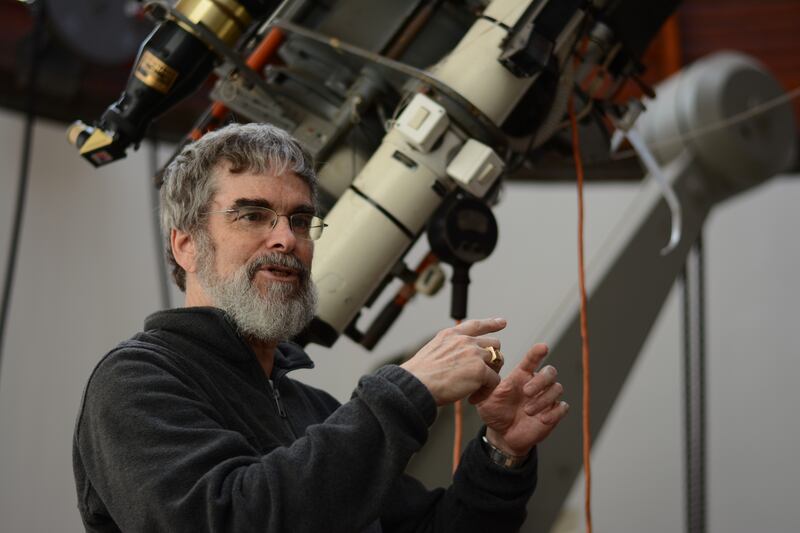When Guy Consolmagno went to Kenya with the Peace Corps at age 30, he was homesick at first, but soon found a remedy: He would go outside after dark and look at the stars scattered like diamonds across the night sky.
“These were the stars that I grew up with in Michigan. So I said, ‘How can I be homesick? These are my friends’,” he said.
Consolmagno, 71, now looks at his star friends from one of the most renowned observatories in the world. As head of the Vatican Observatory in Castel Gandolfo, Italy, he’s informally known as “the pope’s astronomer” and leads a team of priests and religious brothers who are also scientists.
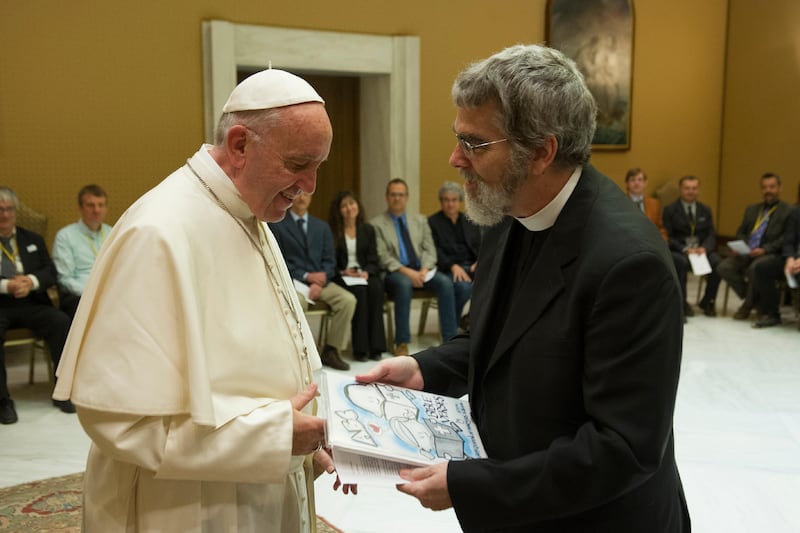
It’s a dream job for a lifelong Catholic and a “Sputnik kid” who grew up in Detroit fascinated by space and science, but not really sure what he wanted to do in life. For that matter, it’s a dream job for just about anyone.
“When I first got here, I was telling a friend of mine about this, and he said, ‘That’s great, how do I get in?’ And I said, ‘Well, you have to take a vow of celibacy.’ He laughed and said, ‘My wife’s a scientist, she’d understand’,” Consolmagno told me recently over Zoom.
He was speaking from a library at the Palace of Castel Gandolfo, the opulent retreat that has served as a summer home for popes since 1626. The current pope, however, is not there; Francis has chosen to remain in Rome during the summer and to open up the gardens to tourists. That is not a disruption to Consolmagno and his team. The property encompasses 135 acres on a hill overlooking a lake— it is larger than Vatican City — and the Observatory is not open to the public.
Consolmagno spends half the year here when he’s not traveling or working at the Vatican’s sister observatory at the University of Arizona. Fifteen people — most of them scientists — live and work “like migratory birds,” he said, “spending winters in Arizona and summers in Italy.” The building that contains both their working and living quarters was constructed in 1632 and is suffused with history; there are books and journals that date to the 1600s here. “I could walk over and pick up the book where (Scottish physicist) James Maxwell published his equations,” he said.
But despite the gravitas of his surroundings, in our conversation, it soon became clear that even top-ranking Vatican scientists are allowed to have a sense of humor — this is a man, after all, who co-authored a book entitled “Would You Baptize an Extraterrestrial?” (The answer: ”Only if she asks,” Consolmagno has quipped. The serious answer is much more complex and doesn’t lend itself to a simple yes or no.)
But this self-described nerd with a penchant for science fiction and astronomy-related puns is quite serious when it comes to the heavens, and what the study of space can teach us about God.
“Astronomy itself is a great way of getting to know God, the creator,” he told me. “When you get to know anybody that you’re in love with — whether it’s your best friend, your parents, who you’re going to marry — it’s a never-ending experience, and you do it by spending time with them, getting used to them, seeing the things they do. The universe is what God has done. And so by seeing how the universe works, we get a sense, a better understanding, of God’s personality.”
In other words, learning about stars, planets and galaxies isn’t just learning about astronomy, but learning about God, he says, and he believes it’s something we all should do. He has never seen a contradiction between science and faith, but instead sees scientific inquiry — the search of truth — as naturally complementing religion. “If you’re in love with truth, you’re in love with something that is transcendent,” he said.
Scientists, after all, are looking for revelations, just like people of faith are.
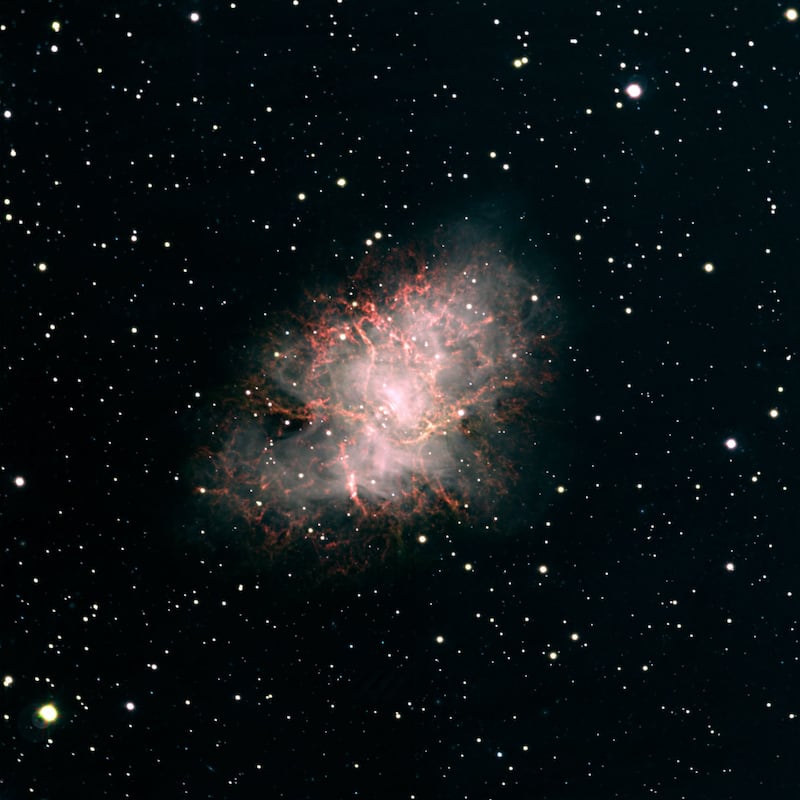
Stars in alignment
Consolmagno’s path from Detroit to the Vatican was not linear, nor predictable, even though he grew up in a Catholic household with two siblings and an Italian father and an Irish mother, both of whom prized education. His mother taught home economics at a local high school, his father was a journalist who later went into media relations. “I was a senior in high school when we landed on the moon, so of course I was space crazy,” Consolmagno said. It also helped that his father was “a stargazer who learned navigation stars as a B-17 navigator in World War II.”
After high school, with no clear plan for a career, Consolmagno enrolled at Boston College to study history, but later transferred to Massachusetts Institute of Technology, which seemed more exciting, and “besides, they had the world’s biggest science fiction collection.” He jokes that he transferred in part to read science fiction, “but also to do the science fiction.” He went on to earn an undergraduate and master’s degree in planetary science, then went to the University of Arizona for doctoral studies.
With a Ph.D. freshly added to his resume, he returned to Boston for five years of post-doctoral research at MIT and Harvard, before joining the Peace Corps after having something of a quarter-life crisis.
“I did have sort of a crisis, not a crisis about faith, but rather faith in my science,” he said. He was asking himself, “Why am I doing science when people are starving in the world?” But his experience in Kenya taught him that there is more to missionary work than distributing food or preaching the Gospel. Although he was in Kenya to teach, he was struck by how often people would ask to look through his telescope and ask him questions about space.
“They reminded me of why you do science. … It’s because we’re human beings, and we’re hungry for more than just food. We don’t live by bread alone — I read that someplace, right? It’s literally true.”
Consolmagno had thought about becoming a priest when he was at Boston College, but had learned through prayer that this wasn’t God’s plan for him.
“It was kind of frightening the first time I had a prayer experience and felt God telling me something,” he said. “You can go through the motions (in prayer), but when it really occurs, it’s frightening. That’s what they mean by awe, in the gifts of the Holy Spirit. … And it was overwhelmingly clear to me, it was made clear to me, that I did not have the tool set to be a priest. God did not want me to be a priest.
“At the end of the day, I’m a nerd. And a nerd from a pretty sheltered life. When people come to me with problems, I have a hard time figuring out where they’re coming from because my family life was so easy, my parents were so wonderful.”
In contrast, he points to a priest who also works at the Vatican Observatory and is an expert on quantum gravity, but also says Mass at a local prison every Sunday. “He’s got this marvelous pastoral sense, and I truly envy him,” Consolmagno said.
As he approached his 40th birthday, Consolmagno was in a relationship that wasn’t working out, and he realized he could nurture his inner nerd and his spiritual self by answering God’s call to become a Jesuit brother. Jesuits are members of The Society of Jesus, an all-male religious order founded by St. Ignatius of Loyola. They can be either brothers or priests. (Pope Francis is the first Jesuit pope.) Brothers live in the religious community and take vows of poverty, chastity and obedience, but they are not ordained and do not say Mass or administer sacraments of the church.
Four years after taking his vows, Consolmagno became part of the Vatican Observatory team and he was named its director in 2015.
At Castel Gandolfo, his personal stars had aligned in a way he couldn’t have foreseen gazing at the sky, homesick, on those first lonely nights in Kenya.
‘My science depends on God’
At the Vatican Observatory, science is done just like it’s done anywhere else, just without the relentless pressure of getting grants or tenure, said Consolmagno, who speaks English and Italian, and a smattering of German and Swahili. (At the Observatory, “The science is done in English and the rest of community life takes place in Italian,” he said.)
“When I got here 30 years ago, the boss told me what I tell everybody when they arrive: your mission is good science. And we are free to pursue whatever science we think is interesting to us.”
That means that Vatican astronomers publish papers in prestigious journals with co-authors from around the world, with titles like “Light curves and colors of four near-Earth asteroids” and “Low temperature properties of iron meteorites,” as well as the papers that are a bit more theological in nature: “Galileo Between Jesuits: The Fault is in the Stars.”
Consolmagno has a soft spot for meteorites, not surprising for a man who has an asteroid named after him. One of his projects has been doing a survey of the physical properties, the density, of meteorites. “It’s the kind of thing you would think people would have done a zillion years ago, but they never did. And it’s partly because curators don’t like to give meteorites away to make these measurements. But I was my own curator, so I gave myself permission,” he said. “Also, it took us about 10 years to amass enough of those numbers. We need thousands of measurements of every sort before you can show, here are the patterns.”
In addition to funding received from the Vatican, the Observatory solicits contributions for its work through the Vatican Observatory Foundation. “Our typical donor is a wealthy Catholic engineer who understands who we are and what we’re doing and why this is something to support.” Consolmagno told me. “We’re not competing with our fellow astronomers (for grants) — we don’t apply to NSF (the National Science Foundation) or NASA.” He spends several months each year working at the Steward Observatory at the University of Arizona, where the Vatican has a telescope, and also lectures around the world. (The Vatican bought a home in Tucson about 30 years ago.)
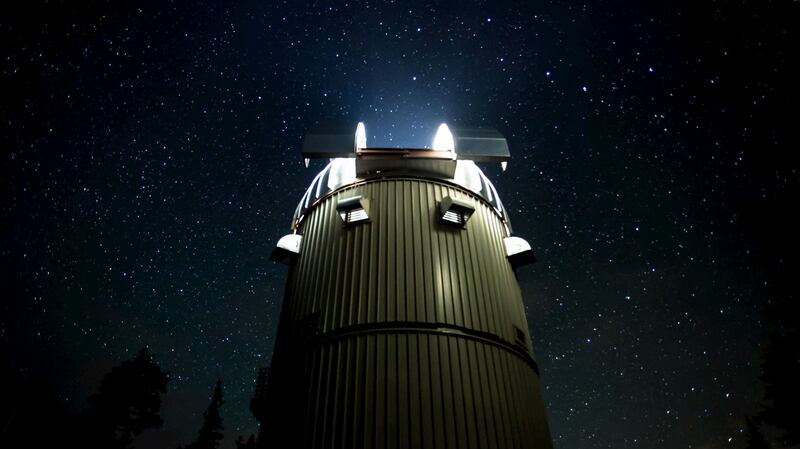
In 2016, he spoke at Brigham Young University, where he told students, “My belief in God is one of those axioms that makes my belief in science possible. My life of faith is essential to my life of science. My science depends on God.”
It’s critical that the work of the scientists at the Vatican meet the highest secular standards because of Observatory’s overarching goal, “to promote the idea that science is not contrary to the faith,” Consolmagno told me.
For believers, studying the universe unites our intellect with our emotions, as we realize that God’s creation functions by means of rational laws but are also sources of awe and beauty, he said. Astronomy can teach us the physical laws of our universe — such as when the next solar eclipse will be — and we can marvel at the order of creation. “But how is it that even though I can predict the eclipse, I cannot predict the effect it’s going to have on me, when I actually look at it and go ‘Oh, wow’ or jump up and down for joy,” Consolmagno said. That uniting of the rational and the emotional is an experience that helps us know God.
“Why do I do this work at the end of the day? It’s not going make me rich, it’s not going to make me famous. It’s not going to get me girls. What gets me up and going into the lab every day, because science can be pretty tedious on a day-to-day basis? What gets me going is that sense of joy when I do encounter truth. That sense of fun when I do get a little bit of glimpse of what’s going on.”
He recalled a student’s reaction when he was teaching at Fordham University a few decades ago, when he was explaining Maxwell’s equations regarding light and waves. At the moment one student understood what he was explaining, the student gasped in excitement, invoking the name of God.
That moment is what scientists are looking for when they’re searching for truth.
“Even if you don’t believe in God ... I hope you believe in “Oh, my God” — that burst of joy when you discover. Because to me, that’s evidence of the presence of God,” Consolmagno said.
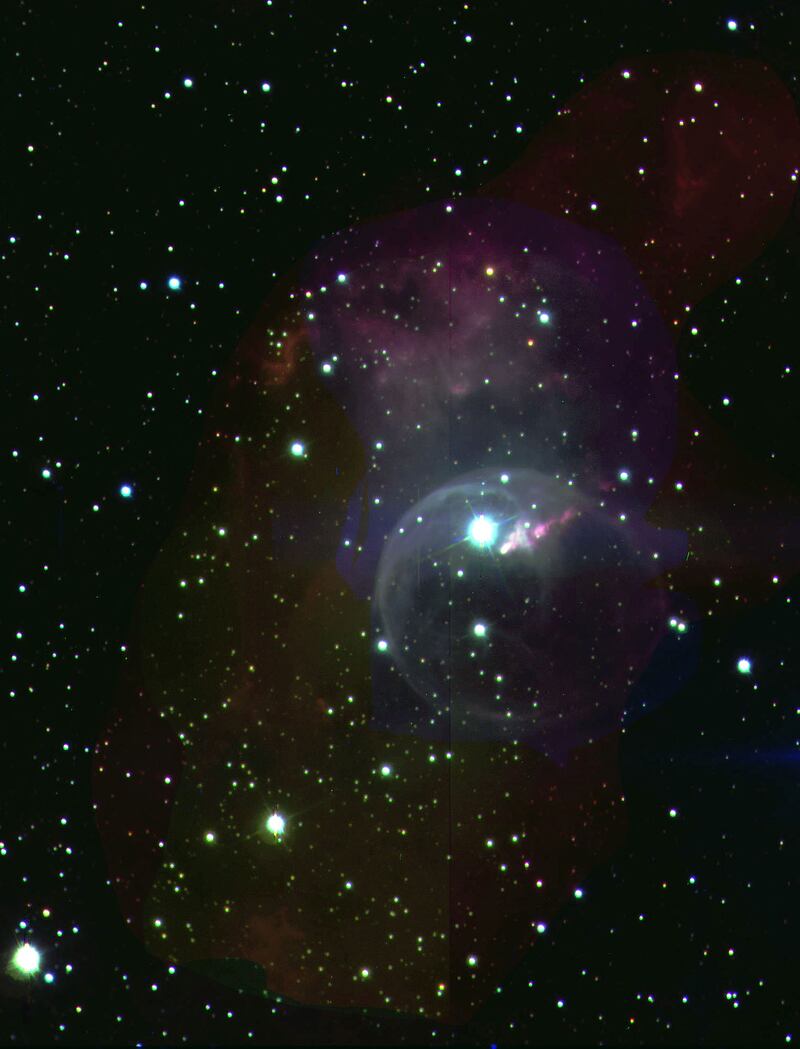
A Jesuit looks at the stars
The enormity of space challenges us to enlargen our concept of God and his power, and perhaps even to rethink our ideas about where God dwells.
But, Consolmagno told me, “For whatever reasons, even as I child, I never thought of God as in a place, either the sky or some particular holy site. But I certainly have had the experience where God does seem closer to me — for example, during my time in Africa. It’s not that God is more there than other places, but rather that the boundaries that we build to ward off that frightening presence are thinner in some places than others.”
Part of Consolmagno’s ministry is to make knowledge of the heavens accessible to everyone, just like he did when he shared his telescope with villagers in Kenya during his Peace Corps service.
In books like “Turn Left at Orion: Hundreds of Night Sky Objects to see in a Home Telescope — and How to Find Them” (co-written with Dan M. Davis) “Would You Baptize an Extraterrestrial?” writes in a conversational tone, explaining doctoral-level ideas in language that anyone can understand. A new book, “A Jesuit’s Guide to the Stars,” is scheduled for release in February.
“If you tell people ‘you don’t get to learn about astronomy because you’re poor, because you’re African, because you’re the wrong gender,’ you’re denying them their humanity,” Consolmagno told me, adding, “We don’t all have to be football players to enjoy watching a good football match. But it helps to know how the game works to watch the match. And that’s the same in science.”
And people of faith shouldn’t hesitate to explore challenging questions in search of truth, he said. They’re likely to find that the answers bolster their faith, rather than weakening it.
“I’ve never had a case where this bit of science contradicted this bit of religion. But all the time, I get the case where this bit of science contradicts this other bit of science — and then you’re really excited because you realize you’re about to learn something new and how they fit together in way that you never knew before. I’m not afraid of the contradictions. You actually go out looking for them because that’s where the action is, that’s where the fun is — trying to find out, OK, I misunderstood my faith. Or, OK, I misunderstood my science. There’s more going on that I thought. And of course there is.”

